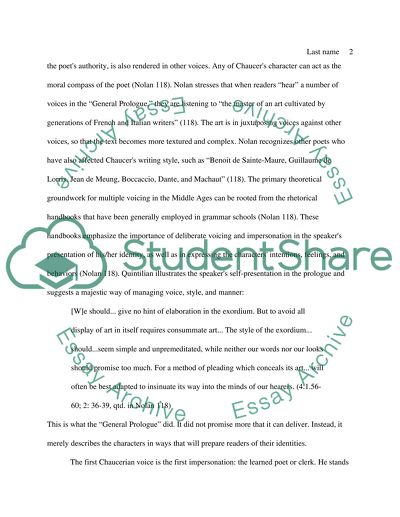English - The Canterbury Tales Essay Example | Topics and Well Written Essays - 1250 words. Retrieved from https://studentshare.org/english/1439771-the-canterbury-tales
English - The Canterbury Tales Essay Example | Topics and Well Written Essays - 1250 Words. https://studentshare.org/english/1439771-the-canterbury-tales.


